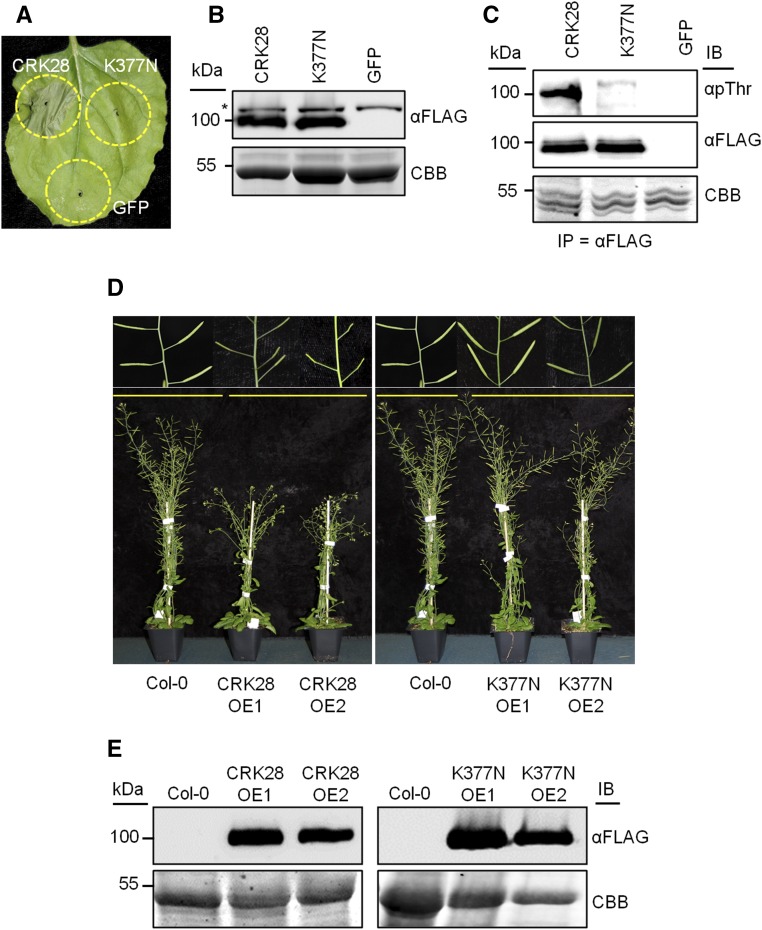Figure 4.
The CRK28 intracellular ATP-binding Lys (Lys-377) residue is required for CRK28-mediated function, and CRK28 is phosphorylated in planta. A, Transient expression of 35S:CRK28-FLAG, 35S:CRK28K377N-FLAG, and 35S:GFP in N. benthamiana. No cell death was observed for the K377N mutant. The leaf was photographed 48 hpi. B, Anti-FLAG immunoblot demonstrating the expression of CRK28 and CRK28K377N 20 hpi. The asterisk shows an anti-FLAG cross-reacting band. The bottom gel shows the membrane stained with Coomassie Brilliant Blue (CBB) to indicate protein loading. C, In planta phosphorylation of CRK28 and CRK28K377N. 35S:CRK28-FLAG, 35S:CRK28K377N-FLAG, and 35S:GFP were expressed transiently in N. benthamiana and subjected to anti-FLAG IP. Twenty microliters of the resuspended beads was used for a kinase reaction containing 100 µm ATP. After incubating the reaction at 30°C for 1 h, the proteins were separated by SDS-PAGE and immunoblotted (IB) with anti-phospho-Thr antibody and anti-FLAG antibody. D, Overexpression of CRK28 in Arabidopsis affects flowering and silique development. 35S:CRK28-FLAG and 35S:CRK28K377N-FLAG constructs were transformed into Col-0. Transgenic T1 seeds were selected on kanamycin plates, and transformants were transferred into soil along with Col-0 grown on Murashige and Skoog plates without kanamycin. Representative images show transgenic T1 plants expressing 35S:CRK28-FLAG and 35S:CRK28K377N-FLAG 7 weeks post transplanting onto soil. The same Col-0 plant was used in both images, as the T1 plants were transplanted at the same time and grown in the same conditions. E, Anti-FLAG immunoblots showing the protein level expression of CRK28-FLAG and 35S:CRK28K377N-FLAG. The bottom gel shows Coomassie Brilliant Blue stain indicating total protein loading.

